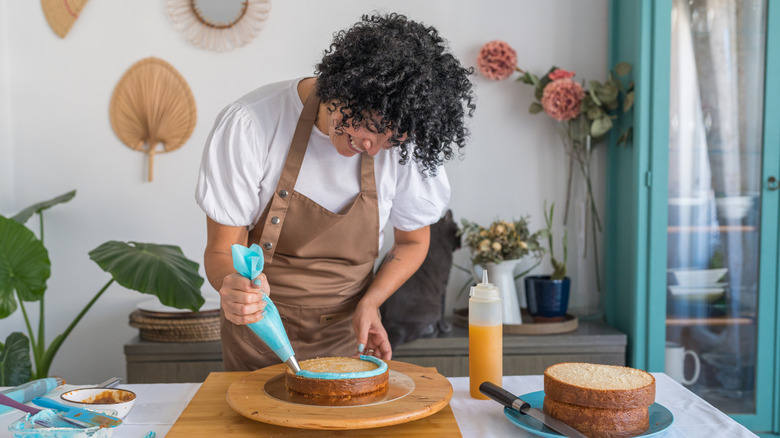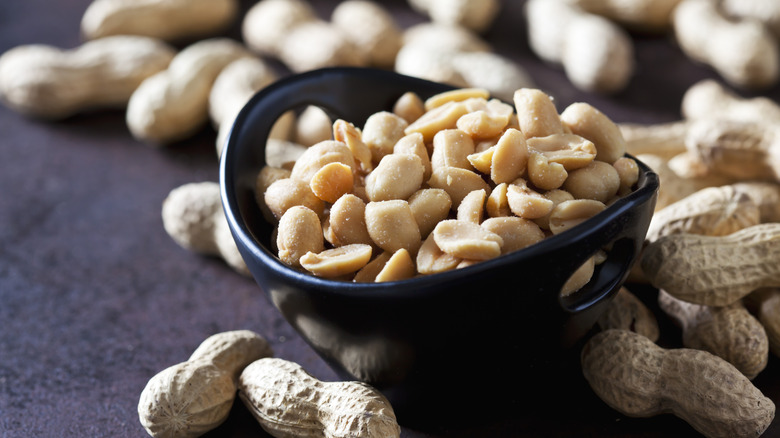The Vital Baking Substitute Rule To Keep In Mind For Special Accommodations
Anyone who bakes will tell you that it's not as easy as it might look from the outside. A lot of hard work goes into making cakes, cookies, brownies, and other wonderful confections. In particular, baking can get complicated when you're substituting ingredients so people with dietary restrictions can eat your creations safely. When you do, those substitutions will require further accommodation.
Let's use celiac disease as an example. It's a common dietary restriction with plenty of substitute ingredients on the market like gluten-free flour. But those ingredients don't have the same effects as their standard counterparts, and trying to use them one-to-one when baking a cake is a big mistake. Gluten-free flours are drier than regular flour, which means that if you're using one as a substitute in a recipe, you need to add additional moisture to compensate. Otherwise, the resulting cake will be dry and nothing like the typical version.
People like to say that cooking is an art and not a science, but baking definitely tends more towards science. Most baking relies on chemical reactions to produce the delicious treats you're aiming for and each ingredient has an important role to play, so substituting something out can have a much greater effect on the final product than you might think. Whenever you make substitutions, consult a dedicated recipe that accommodates the restriction you're working around (gluten-free, lactose-free, and so on) for tips. Some recipes may even offer substitutions to help you adjust them for this very purpose.
What about other accommodations?
Peanut allergies are another common dietary restriction. Let's say you love peanut butter cookies but have someone with an allergy visiting. It should be simple to adapt them into sugar cookies, right? Wrong. Peanut butter has a high fat content, so if you just skip it and add extra sugar but nothing else, you'll very likely end up with dry, bland, and disappointing cookies. Instead, you'll need extra fat, perhaps in the form of butter, to account for your missing ingredient.
What about substituting dairy for lactose-intolerant friends? Greek yogurt is a common ingredient in baked goods, and while some lactose-intolerant folks can consume this form of dairy, if you're playing it extra safe, know that there are plenty of baking ingredients that can be swapped for Greek yogurt. Mashed banana and coconut cream are both good lactose-free alternatives, but both will require additional accommodation and can dramatically change a final product's flavor. What's more, since baking soda needs acidity to work, if you're skipping on relatively acidic yogurt, you'll need an additional source of acid to help your creation rise.
The same goes for nearly any ingredient you substitute, even if it's something that seems innocuous. Attention to small details can pay dividends, as even butter temperature matters when baking. Thankfully, it's not impossible to produce delicious treats that accommodate someone's diet. It just takes a bit more adjustment, but it's worth it to make amazing baked goods that everyone can enjoy.

